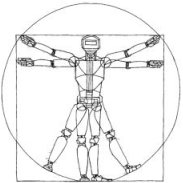Robotics: Science and Systems XIII
Design of a Partially-Coupled Self-Adaptive Robotic Finger Optimized for Collaborative Robots
Lionel BirglenAbstract:
This paper presents the design and optimization of a self-adaptive, a.k.a. underactuated, finger targeted to be used with collaborative robots. Typical robots, whether collaborative or not, mostly rely on standard translational grippers for pick-and-place operations. These grippers are constituted from an actuated motion platform on which a set of jaws is rigidly attached. These jaws are often designed to secure a precise and limited range of objects through the application of pinching forces. In this paper, the design of a self-adaptive robotic finger is presented which can be attached to these typical translational gripper to replace the common monolithic jaws and provide the gripper with shape-adaptation capabilities without any control or sensors. A new design is introduced here and specially optimized for collaborative robots. The kinetostatic analysis of this new design is briefly discussed and then followed by the optimization of relevant geometric parameters. Finally, a practical prototype attached to a very common collaborative robot is demonstrated. While the resulting finger design could be attached to any translational gripper, specifically targeting collaborative robots as an application comes with certain specificities in the choice of the design parameters as will be shown and the optimized parameters that are found match them.
Bibtex:
@INPROCEEDINGS{Birglen-RSS-17,
AUTHOR = {Lionel Birglen},
TITLE = {Design of a Partially-Coupled Self-Adaptive Robotic Finger Optimized for Collaborative Robots},
BOOKTITLE = {Proceedings of Robotics: Science and Systems},
YEAR = {2017},
ADDRESS = {Cambridge, Massachusetts},
MONTH = {July},
DOI = {10.15607/RSS.2017.XIII.001}
}
